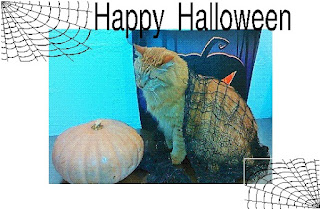Hexagons Revisited Part Two
 |
| Before we begin, yet another photo of Gizmo! |
So, after the first post you have decided you want to try hand piecing, but you have no interest in learning to print on fabric with your home printer. There are other ways to get the pieces marked.
As previously stated, I am a proponent of marking both the cutting and the seam lines when hand piecing. Marking both lines requires a window style template. You can make your own out of various materials. During the Great Depression, ladies used cardboard saved from grocery item boxes. There was a time when bacon came on a piece of plastic that worked great for templates and didn't wear down on the edges like cardboard. Now, when I want a template, I print them from a computer quilt program onto cardstock. Before cutting, I glue the cardstock to fine sandpaper to keep it from slipping when marking on fabric and then cut it out. I have used this method for many of my miniatures. I usually make several of the same template and throw them away as they wear. This is an accurate method, as long as you are able to be precise when cutting.
 |
| Print out, glue to sandpaper and then cut out window style for templates. |
Another method is to order a window style metal template with non-slip backing from Ardco Templates. These templates are practically indestructible. Ardco offers a huge selection of templates. Just be sure to order window style, so that you can mark the cutting and sewing lines.
Below is a photo of an old (c. 1979) Quilter's Template that I found at a flea market. I bought it for this post. Here you can see that one plastic template would allow you to mark many sizes of hexagons. Your pencil slips into grooves in the plastic. It is not really my cup of tea, but thought it was worth a mention, as you might find one online, if you really wanted it. I am not sure how accurate it would be.
 But the method that makes the most sense, time-wise, to me is to use a rubber stamp with a stamp pad and simply stamp the hexies out on the back of your fabric. Cindy Blackberg has a nice website that shows all the stamps she makes and gives a good explanation of how to use them. Visit her blog as well. (The bottle shown below is a re-inker for the stamp pad. That way you don't have to buy a new stamp pad - you can just add more ink to it.) Her website and blog will explain this method further for you.
But the method that makes the most sense, time-wise, to me is to use a rubber stamp with a stamp pad and simply stamp the hexies out on the back of your fabric. Cindy Blackberg has a nice website that shows all the stamps she makes and gives a good explanation of how to use them. Visit her blog as well. (The bottle shown below is a re-inker for the stamp pad. That way you don't have to buy a new stamp pad - you can just add more ink to it.) Her website and blog will explain this method further for you.
Here is a small quilt top that I hand pieced using one of her patterns and stamp sets:
 |
| Someday I may actually quilt it! Or maybe not.
|
It was fun, fast and accurate to use her stamps. Plus, unlike computer printing, where you need an entire 8.5" x 11" piece of fabric, her stamps lend themselves to using small pieces of fabrics. Charm squares or scraps would be fine, depending on the size of the stamps you are using. So, if you love scrappy quilts and want to hand piece, stamping might be the answer for you.
Note: I don't sell any of these products nor am I connected to them in any way. Just letting you know what is out there.
Well, that about covers it for marking hexagons for hand piecing. In the last part, I'll talk about EPP and why I have changed my mind about doing it.Till next time......
Sheila




Comments